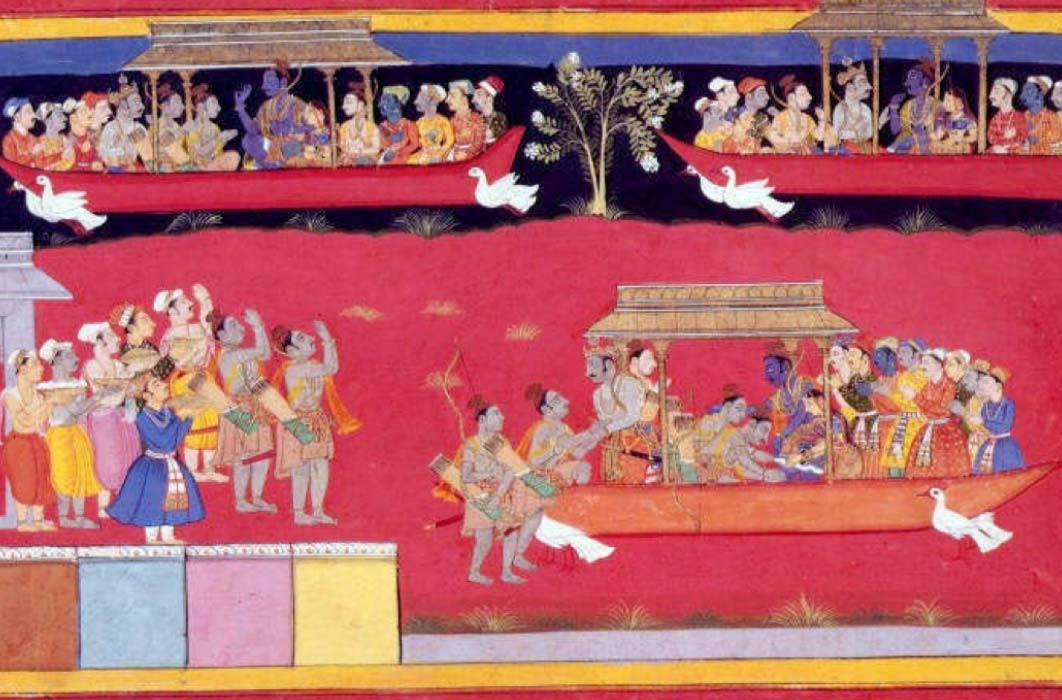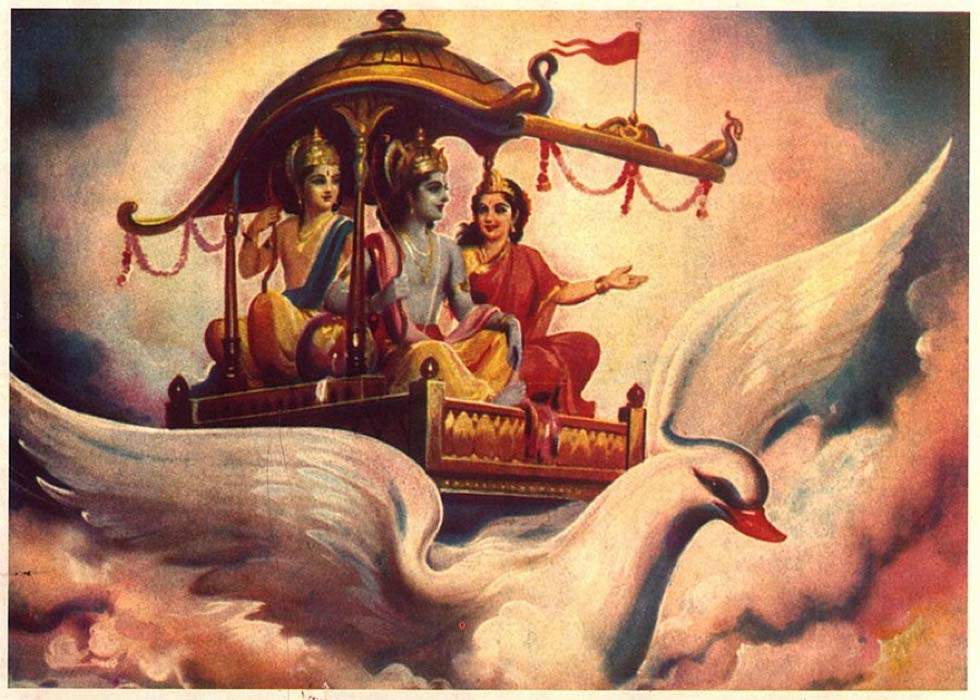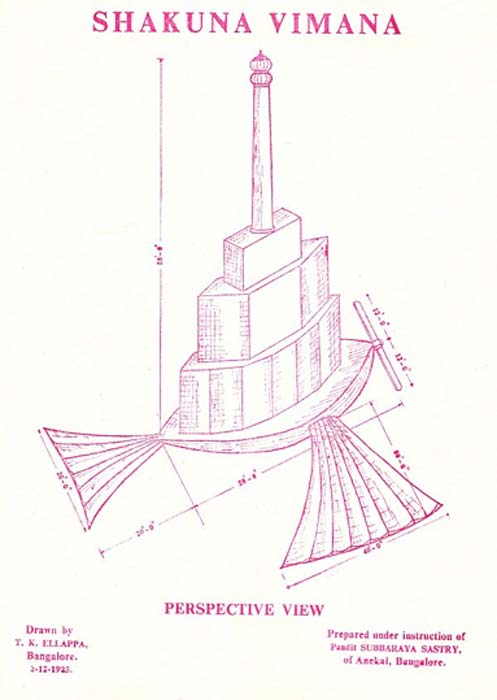
Marutsakha Takes Flight: Modern Aviation Based on Ancient Vimana
In 1895 Shivkar Bapuji Talpade (1864-1916), a member of the Maharashtri, launched an unmanned aircraft called Marutsakha, (Sanskrit ‘Marut’ means Air and 'Sakha' means ‘Friend’, so ‘Friend of the Air') on Chowpatty beach. This event predates the famous flight of the Wright brothers in 1908, considered to be the first ‘official’ flight of human history, with 13 years. What is more remarkable is in 2004, the Times of India confirmed: “Talpade used the principles of the solar energy combined with the use of mercury to design his aircraft" and this refers to knowledge of the Vimana, ancient mythological flying palaces or chariots described in Hindu texts and Sanskrit epics, of which the Pushpaka Vimana of king Ravana is the most quoted example.

Pushpaka Viman from Tulsi Ramayan Tej Kumar Book Depot by MahaMuni (CC0)
Ancient Solar Energy
In 2003, the Deccan Herald republished an article which stated that: "... a scholarly audience led by the famous Indian nationalist judge, Mahadeva Govinda Ranade along with H.H. Sayaji Rao Gaekwad have been lucky enough to see this unmanned plane called 'Marutsakha' take off and fly at a height of 1,500 feet, before it descended to the ground.” On September 14, 1952 the Vritta Vividha, a popular weekly newspaper published in Bombay headlined: “An Indian man is the first inventor of the airplane… based on the work of Bharadwaja, Talpade came to the conclusion that the machines needed to run the Vimana come into full operation when the power of mercury, aided by the rays of the sun and in combination with another chemical called "Rasa Naksha" are mixed together. This energy appears to be stored in something like an accumulator. The plane must then actually wait for a favorable wind to take off from the ground”. It disconcerting to note how a newspaper of the 1950’s cited to express that solar panels - which were ‘invented’ only in 1972 in western countries - together with mercury and other substances could generate a driving power.

Rare representations of Subbaraya Shastry (left) and Bapuji Talpade (right) (© Enrico Baccarini)
The Vaimanika Shastra
Talpade, a professor at the School of Art in Bombay had a special interest in Vedic Sanskrit which afforded him insight into the Vaimanika Shastra, to construct his aircraft. (The Vaimanika Shastra was "dictated and put into writing" by the Pandit Subbaraya Shastry in 1918, but it belonged to the class of 'sacred knowledge' defined as Shruti or orally and mnemonic transmitted over millennia). This information comes directly from the autobiography of the Pandit Subbaraya Shastry, published only in 1972. In an article published in the Bhautik Kala Nidhi (1911) about the Marutsakha, Shastry noted: "The air owns heat and speed. These two factors can be separated with the help of some Yantra (machineries), as shown in the Adhyaya Yantra. The air contains Seethaghana and Ooshnaghana or condensation through the different processes of cold and heat. All these Vimana can work through the Ooshaanghana, after destroying Seethaghana, they go under the name of Marut Sakha Vargam.” In his autobiography Shastry also states that during his meetings with Talpade he provided detailed information to Talpade about this type of Vimana, for the common will to build such an aircraft described in the Sanskrit traditions. The result of this effort was the aircraft that flew in 1895 on Chowpatty beach.

1923 Illustration of the Shakuna Vimana (Public Domain)
The Sacred Wisdom of the Shruti
Modernity, technology and social dynamics during the last three centuries have been a definite advantage in the evolution of our species. The progress, fundamental to improving our life processes, however, has also given rise to a thin, parallel and collateral involution. The term relativism indicates the loss of the sense of the sacred and the lack of respect for the teachings of the ancient masters.




